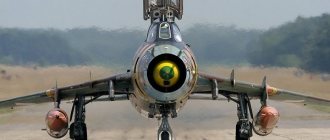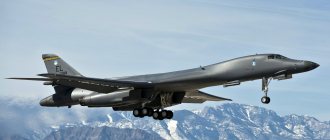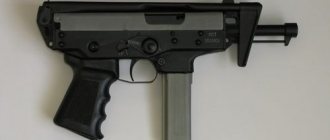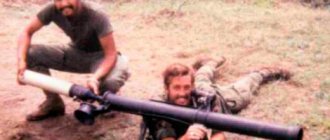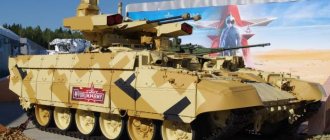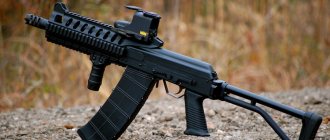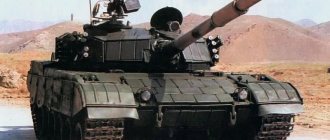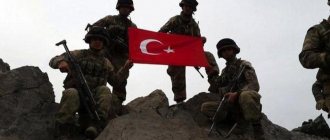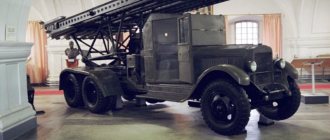The development of the Typhoon-Air Defense combat vehicle for detaching anti-aircraft gunners of a portable anti-aircraft missile system (MANPADS) is at the final stage. They plan to complete development work in July-September 2022, reported RIA Novosti Fanil Ziyatdinov, general director of the Izhevsk Electromechanical Plant, part of the Almaz-Antey VKO concern.
Ziyatdinov notes that the development is being carried out at the expense of its own resources, but in close cooperation with specialists from the Russian Ministry of Defense. At related enterprises, preparations are already underway to launch mass production of the future armored car.
“Typhoon-Air Defense” has already managed to show itself at the “Clear Sky” competition of the International Army Games in 2022 and at the International Military-Technical Forum “Army-2020”.
What kind of combat vehicle is the Typhoon-Air Defense?
"Typhoon-PVO" is a universal armored vehicle with increased security. It is capable of withstanding explosions from devices with a power of up to eight kilograms of TNT both under the wheels and under the bottom. The combined protection of ceramic armor and armor steel is resistant to armor-piercing incendiary bullets.
The vehicle accommodates a crew of five: a commander, a driver, a machine gunner and two anti-aircraft gunners. The compartment for the shooters is equipped with everything necessary: MANPADS, launchers, power supplies, radar interrogators, ammunition for the machine gun, etc. On the roof of the Typhoon there is a turret with a large-caliber machine gun of the Kord type, and there are also special hatches for the shooters: the machine gunner and anti-aircraft gunner
Question answer
What is the Terminator tank support combat vehicle?
The Typhoon-Air Defense includes an armored vehicle based on the KAMAZ-4386 chassis with a 4x4 wheel arrangement, radio stations, navigation equipment and the following special tools and equipment:
- anti-aircraft guided missile (SAM) - 9 pcs.;
- trigger mechanism (PM) - 3 units;
- ground power supply (GPS) - 19 pcs.;
- set of depreciation means for the squad of anti-aircraft gunners - 1 pc.;
- 12.7 mm Kord anti-aircraft machine gun with ammunition;
- machine 6T19 for placing “Korda”;
- optical sight SPP1-OP50.
Computer network "Eurofighter Typhoon"
The Eurofighter Typhoon computer network has its own characteristics. In the F-22 and Rafale F2/3 fighter jets, signals from sensors are fed into a central data processing system. Unlike these models, the Eurofighter of the first tranche does not use integrated modular avionics ( Integrierte Modulare Avionik, IMA
). In it, data from sensors is processed by several subsystems and collected into an overall tactical picture of the situation.
The aircraft's computer network consists of several computers that are connected by fiber optic cables according to the STANAG 3910 standard. The data transfer speed in the network reaches 1 Gbit/s. Individual systems also represent "islands" in the avionics and are connected to the fiber-optic network only through an additional computer.
Ada code snippet
The entire aircraft software is written in the Ada programming language
). At the time of the development of the Eurofighter Typhoon project, it was the largest Ada software project in Europe. In the machines of the first tranche, all microprocessors of the Motorola 68020 type received the designation of a general purpose processor. However, the application software only works with the specific hardware of the respective mission computer, making necessary changes difficult or impossible.
System development
In order to counteract obsolescence, for aircraft, starting from Tranche 2, a comprehensive redesign of avionics was carried out according to the ASAAC aviation standard. As a result, the functionality was strictly divided into hardware and software.
The next step was to combine more than 40 Eurofighter Typhoon mission computers into a single General Purpose Mission Computer (GPMC).
). This made it possible to support just one mission computer running one operating system, running more than 40 applications simultaneously. Thus, Tranches 2 and 3 aircraft are identical on the software side because the application software or its updates run on the same operating system and are ASAAC compliant.
According to publications, during the modernization, the Eurofighter Typhoon received a new crypto module from Cassidian. With its introduction, there was no longer a need to manually enter before each mission and delete upon completion codes for radio communications, friend-or-foe recognition systems, GPS and data transmission channels.
The new module is capable of managing passwords and requires all codes to be filled in only once. Instead of having to enter the required keys an hour before each mission, with the risk of input errors, the procedure now takes less than a minute. Experts estimate that the innovation saves triple-digit millions in product life-cycle costs. The Eurofighter Typhoon was the first combat aircraft with such a system.
Features of the Typhoon-Air Defense combat vehicle
The armored vehicle provides transportation of five people, special means and equipment on roads of all categories and off-road.
Combat use and daily operation of an armored vehicle are possible at any time of the year and day at an altitude of up to 3000 m above sea level.
Ensures targeted operation of an anti-aircraft gunner and machine gunner in motion at a maximum speed of 20 km/h.
The Kord machine gun can be used both from a machine gun mounted on the rotating turret of the vehicle (the machine gun is aimed in the azimuth plane 360°, in the elevation plane - -10°... +80°), and as a manual machine gun with a 6T19 infantry machine gun placed in the stowage.
Provides protection for personnel from small arms fire, artillery shell fragments and improvised explosive devices.
What kind of air defense system "Gibka-S" was tested by the Ministry of Defense? More details
D-19 missile system with R-39 ballistic missile
In the early sixties, work began in our country on the creation of solid-fuel ballistic missiles with an intercontinental flight range. By the end of the decade, the strategic missile forces received the first complex of a new class. Soon the development of similar systems for placement on submarines began. Several new systems were created, the most successful of which was the D-19 with the R-39 missile. The decision to develop a new rocket was made in mid-1971. SKB-385 / Mechanical Engineering Design Bureau, headed by V.P. Makeev, were tasked with creating a new missile system for submarines. It was necessary to create a three-stage solid-fuel rocket with a launch weight of about 75 tons and a length of up to 15 m. The product was supposed to carry a monoblock or multiple warhead (3-5 or 8-10 warheads) and deliver warheads to a distance of up to 10 thousand km. The project of the new missile system received the designation D-19 and the code “Typhoon”. The missile was designated R-39.
In about a year, the design bureau completed the development of a preliminary design for the new complex. At this stage, the main features of the promising complex were identified, which were later brought to application in the final project. The general architecture of the product was formed and launch methods were determined. The engineers also selected the main components of the future rocket. It was proposed to transport the rocket on a carrier using a shock-absorbing rocket launch system (ARSS) and launch without filling the launch silo. In addition, the preliminary design implied the use of a starting engine placed on the nozzle of the first-stage propulsion system.
R-39 missile during loading onto a submarine. Photo Rbase.new-factoria.ru
On September 16, 1973, the USSR Council of Ministers decided to begin developing a technical design for the D-19/R-39 missile system. Design Bureau of Mechanical Engineering was appointed as the lead developer of the project. Related organizations were also involved in the project. In particular, the development of the first-stage solid fuel engine was entrusted to the Yuzhnoye Design Bureau and the Altai NPO. The September decree also specified the development of a promising Project 941 nuclear submarine, which was to become a carrier of new missiles.
The preliminary design of the D-19 complex was completed by the end of 1974. By this time, some changes had been made to the project, which had a certain impact on the appearance of the rocket. In particular, due to changes in the layout and composition of the units, the loading weight of the product (including ARSS, launch systems, etc.) increased to 90 tons. The preliminary design implied several options for combat equipment, carrying from one to ten warheads of different power.
In mid-1975, the technical specifications were changed again and approached their final form. The R-39 missile was supposed to carry ten warheads with a capacity of 100 kt each, attack targets at a distance of up to 10 thousand km and launch using a powder pressure accumulator. The ratio of the required range and combat load received the unofficial nickname “ten to ten.” Subsequently, the requirements for the project were changed again. New versions of this document stipulated a change in the fuel of the second and third stages. In addition, in the latest version of the mission, the flight range was reduced to 8300 km.
Within the framework of the D-19 / R-39 project, several original ideas regarding the architecture of the rocket were proposed and tested. In particular, it was proposed to use a new stage body design, which would significantly reduce the launch weight of the rocket. It was proposed to make the housings from high-strength organic fiber by winding using “cocoon” technology. While providing the required strength, such cases were significantly lighter than traditional metal ones.
A photo of the R-39 missile for one of the international treaties. Photo Fas.org
The idea of “recessed” engine placement was again used. It was proposed to partially place the nozzles inside the engine housings, which would reduce the dimensions of the entire assembled product. At the same time, however, the main features of solid fuel engines did not allow for a relatively large reduction in the size of the stages. In addition, the authors of the project were forced to use small transition compartments in the rocket design that connect the stages to each other.
The first stage of the R-39 product was equipped with a 3D65 solid fuel engine, unified with the RT-23 rocket units. The engine received a charge of solid fuel with an internal channel of a star-shaped cross-section. It was proposed to pour 48 tons of fuel in liquid form into the body when assembling the rocket, after which it was supposed to solidify. The charge shape was designed in such a way that during the last 17 seconds of engine operation there was a decrease in thrust. This made it possible to improve the controllability of the rocket before dumping the spent first stage. A powder pressure accumulator was placed inside the first stage engine nozzle, designed to remove the rocket from the launcher.
It was proposed to control the flight of the rocket during the initial phase of the flight using special gas injection valves placed on a stationary nozzle. Eight pairs of such devices made it possible to change the total thrust vector and control the rocket through all three channels.
The second stage of the rocket also received a solid propellant engine with a charge having a central channel of a complex multi-beam shape. An interesting feature of the second stage engine was the use of a telescopic oscillating nozzle. Before turning on the engine, the nozzle had to be converted to working mode by displacing the moving part. By changing the inclination of the nozzle, the rocket control system could change the trajectory parameters. In this case, separate small-sized engines were used for yaw control.
Rocket flight path. Photo Rbase.new-factoria.ru
The third stage received a solid propellant engine, similar to the systems of the other stages. The engine was equipped with a telescopic nozzle without the ability to change the thrust vector. For maneuvering, it was proposed to use a liquid power plant of the combat stage, integrated with the third. The engines and fuel tanks of the propagation stage were mounted on the sides of the third stage hull. It was proposed to attach an instrument compartment divided into two parts to the head part of the latter. In its head part there was astrocorrection equipment on a gyro-stabilized platform, in the tail part there was inertial equipment with a frame suspended on shock absorbers. The astrovizing device was covered with a removable protective dome.
The mounts for the warheads were located on the third stage body, next to the propulsion stage units. After 1975, only one warhead was developed, carrying ten warheads with a capacity of 100 kt each. Warheads and equipment were protected from external influences by a fairing dropped in flight, formed by several conical surfaces.
The R-39 missile, like some previous domestic weapons for submarines, was supposed to receive a combined control system. The main flight control tasks were assigned to inertial equipment capable of tracking rocket movements in three planes and issuing commands to the steering systems. After resetting the spent first stage, an astrocorrection session was to be carried out with clarification of the rocket coordinates and an additional change in the flight path. Updated control systems have improved hit accuracy compared to existing models. The calculated CEP of the new missile was 500 m.
The promising missile for submarines received a special shock-absorbing missile launch system, the task of which was to ensure the transportation and launch of the product. ARSS received a characteristic mushroom-shaped body, designed for installation on the head of the rocket. Various units were placed inside the system, including means of holding the rocket and a gas generator for optimal release of the rocket from the water. It was also proposed to install several belts with rubber-metal shock absorbers on the rocket body. After the rocket exited the water, all attachments were to be reset. For this, a set of several low-power solid propellant engines was used.
R-39, installed as a monument in Biysk. Photo: Wikimedia Commons
The new type of ballistic missile had a total length of 16 m and a body diameter of 2.4 m. The total weight of the product was 90 tons, while the missile itself without ARSS had a mass of 84 tons. The thrown weight exceeded 2.5 tons.
The D-19 complex received an original launcher with non-standard means of mounting the rocket. It was proposed to install a special support ring on the upper section of the launch shaft, on which the outer part of the ARSS was placed. Thus, in the transport position, the R-39 missile had to be suspended. The dimensions of the rocket-launching device and the belt with shock absorbers protected the rocket from moving in the horizontal plane.
The launch of the new rocket should have looked like this. After pre-launch preparation with the calculation of the flight mission and entering data into the rocket’s automation, the launch command had to follow. At the same time, the powder accumulator charge was ignited. In addition, the ARSS gas generator was turned on. The pressure accumulator would create high pressure in the launcher, pushing the missile out of the silo. When the rocket hit the water, the gas generator created a gas cavity and ensured the correct removal of the product from the water. After rising above the surface of the water, the first stage propulsion engine was to be launched. In the event of an engine failure, a system for automatically retracting the rocket away from the carrier was activated.
The development of the D-19/R-39 project was completed in 1977, after which testing of new systems began. By this time the requirements had changed again. The maximum range was reduced to 8300 km, and the timing of completing the project and putting the complex into service was adjusted.
Submarine K-153, used in the early stages of testing the D-19/R-39. Photo: Submarines.narod.ru
As before, it was decided to carry out the test in three stages: on a submersible stand, on a ground stand and on a carrier submarine. The first stage of testing started in September 1977 and was carried out in the Black Sea. Using the PS-65 submersible stand, 9 launches of special mock-ups were carried out. For these products, a simplified first-stage solid propellant engine 3D65B was developed, characterized by a lower fuel charge. Such a product could completely simulate the operation of a 3D65 engine for eight seconds, after which the model was supposed to fall into the water. Roll tests of the P-39 prototypes were completed at the end of 1978 and passed without any comments.
In December 1978, the K-153 submarine of Project 619 joined the tests. This boat was built according to Project 629, but was later modernized. One new type of launcher was installed in the central compartment of the hull. The K-153 crew completed seven test launches of mock-ups. Firing from the experimental submarine continued until the fall of 1979.
At the very beginning of 1980, the second stage of testing began using the NSK-65 ground stand at the Nenoksa test site. From January to December, five test launches of full-fledged missiles were carried out, but all of them ended in accidents. Based on the results of these checks, the rocket underwent some changes, and in addition, production technologies were improved. On December 27, 1980, the first successful launch of the R-39 from a ground stand was performed.
Testing at the Nenoksa test site continued until the summer of 1982. 17 launches were carried out, mainly at intermediate ranges. Due to the lack of perfection in the design of the new rocket, only half of the launches were considered successful. Based on the test results, a new stage of modifications to the rocket and the entire complex began.
Project 941 submarine. Photo: Wikimedia Commons
In 1972, development of the future carrier of new missiles began. The creation of the nuclear submarine "941" (code "Akula") was entrusted to the Rubin Central Design Bureau headed by S.N. Kovalev. The main requirements for the new submarine were related to the features of the R-39 missiles, which were distinguished by their large dimensions. In addition, the customer demanded that the boats be equipped with two dozen launch silos. As a result, the world's largest nuclear submarine was created. In June 1976, construction began on the head cruiser of a new type - TK-208 (later Dmitry Donskoy). In September 1980, the submarine was launched.
In December 1981, the TK-208 nuclear submarine went to sea for the first time to test the D-19 complex with the R-39 missile. During the year of testing, 13 launches were carried out, of which 11 were successful. On December 12, 1982, joint tests of the submarine and missile ended with salvo firing of four missiles. The tests were considered successful.
In May 1983, the D-9/R-39 missile system was officially adopted as the main weapon of Project 941 Akula strategic missile submarines. Until the end of the eighties, the navy received six Sharks, each of which could carry 20 R-39 missiles. Thus, 200 warheads could be placed on board each submarine, or 1200 in total on all submarines of the project.
To ensure the combat operation of Project 941 submarines, a special Project 11570 missile carrier was developed and built. On board the Alexander Brykin vessel with a displacement of more than 11 thousand tons there were 16 containers for transporting the R-39. To reload these weapons onto submarines, the ship was equipped with a crane with a lifting capacity of 125 tons. According to some reports, the crew of the Alexander Brykin vessel could reload the Akula launchers on the open sea.
Shark launchers with open covers. Photo Rbase.new-factoria.ru
Already in the spring of 1984, the development of an improved D-19U complex with the R-39U missile began. The objective of this project was to improve performance through the use of new control systems and a modernized warhead. The latter was developed in parallel for use in new modifications of the R-39 and R-29RM missiles. The development of the updated missile system and subsequent testing took several years. In 1988, the D-19U / R-39U complex was put into service. In terms of accuracy, the new missile is close to similar land-based systems.
Another missile modernization project using new control systems received the designation R-39M and the code “Thunder”. The development of this project was carried out during the nineties. After testing, the new system was put into service in 2003. This was the last version of the D-19 complex to reach adoption.
Since 1986, the R-39UTTH “Bark” project has been developed. It was necessary to increase the maximum firing range to 10 thousand km with the ability to deliver ten warheads to targets. It was assumed that existing Akula-class submarines would receive the updated complex. In addition, the promising Project 955 Borei nuclear submarines were to become carriers of the R-39UTTH.
The rocket received a new system for launching from an underwater position of the carrier with passage through ice, and was also equipped with modernized control equipment with a flight mode along a flat trajectory. The type of solid fuel used by engines of all stages has also changed. Such changes made it possible to improve the basic technical and operational characteristics of the rocket.
Loading an R-39 missile onto an Akula-class submarine. Photo Militaryrussia.ru
The first version of the D-19UTTH / R-39UTTH project was completed in 1991, but new improvements were soon needed. Due to the collapse of the USSR, the project had to be reworked taking into account the use of only domestic components. This fact, as well as a sharp reduction in funding, led to delays in work. Tests of the updated missile could only begin in 1996.
In 1998, the Ministry of Defense decided to abandon further development of the Bark project. This decision was due to both technical problems of the project, which required continuation of work, and a lack of funding. According to the project developers, at the time of the work stoppage, at least eight test launches were required. However, insufficient funding led to an unacceptable increase in product assembly time: one rocket took about three years to build. Due to such a difficult situation, the customer decided to abandon further development of the R-39UTTH missile. Soon, a new project of a solid-fuel missile for submarines, called “Bulava,” was launched.
During the testing of the new missile system and the operation of the missile by the fleet, almost 70 launches of mock-ups and full-fledged combat products were carried out. After the completion of testing and testing of new missiles, the vast majority of launches ended in successful completion of the assigned tasks. During the operation of the missiles, the crews of Project 941 submarines repeatedly fired in salvos. In addition, in March and December 1997, two salvo firings took place using all ammunition. They were carried out by the crews of the cruisers TK-20 and TK-208.
The last launch of the R-39 rocket took place on December 11, 2003. By this time, the situation with the D-19 complex and its carriers had seriously deteriorated. Production of serial missiles was discontinued, and their warranty periods were coming to an end. Because of this, in 2004, the operation of R-39 missiles of all modifications was stopped. Simultaneously with the reduction in the number of available missiles, due to the need to reduce costs, Akula-class submarines were put into reserve. In 2004, the last representatives of this project left the fleet.
Submarine TK-202 shortly before disposal, 1999. Photo by Wikimedia Commons
State Missile Center named after. V.P. Makeev attempted to extend the service life of existing missiles, but this work was not successful. In addition, as part of the implementation of existing international agreements, the disposal of missiles remaining in storage began. The last products of the P-39 family were disposed of in 2012. The further fate of the submarines left without weapons has become a topic for discussion at different levels.
At the beginning of the 2000s, the modernization of the nuclear submarine TK-208 “Dmitry Donskoy” was completed according to the special project 941UM. The submarine underwent repairs and received equipment to use the new Bulava missiles. During the 2000s, the submarine took an active part in testing a new missile system. TK-208 served as a testing platform until the construction of the new Project 955 Borei submarines was completed.
The D-19 / R-39 missile system can be considered the most successful domestic development of its class. The result of long-term research and design work was the emergence of a number of new original ideas of various kinds, which were combined in the design of a new solid-fuel rocket. In 1983, the R-39 missile officially became part of the submarine fleet, and over the next few years a relatively large group of such missiles and their carriers was deployed. However, the long-term operation of the D-19 complex was prevented by numerous economic, political and other problems of past decades. They did not allow the modernization of the Bark project to be completed.
As a result, the operation of R-39 missiles has now been completely discontinued. Three of its carriers have been scrapped, one (TK-208) is used as a test submarine for new projects, and two more (TK-17 Arkhangelsk and TK-20 Severstal) are in reserve. The prospects for reserve cruisers look pessimistic. Further operation of these submarines is impossible, which is why a decision on their disposal is expected. Nevertheless, Project 941 nuclear submarines still retain the honorary title of the largest submarines in the world, and the R-39 product can deservedly be considered one of the best domestic ballistic submarine missiles.
Based on materials from: https://rbase.new-factoria.ru/ https://makeyev.ru/ https://nevskii-bastion.ru/ https://deepstorm.ru/ https://submarines.narod.ru / https://militaryrussia.ru/blog/topic-671.html Apalkov Yu.V. Submarines of the Soviet fleet 1945-1991. Volume III: – M: “Morkniga”, 2012 Shirokorad A.B. Weapons of the domestic fleet. 1945-2000. – Mn.: “Harvest”, 2001
PIRATE target acquisition system
The Passive Infra-Red Airborne Tracking Equipment
( PIRATE)
has been available as an avionics component since 2007. For cost reasons, not every Eurofighter Typhoon is equipped with this component.
The system was developed by the English-Italian-Spanish consortium Eurofirst ( Eurofirst
).
The high-resolution sensor operates in the wavelength ranges from 3 to 5 microns and from 8 to 14 microns and is located in the radome on the left in front of the cockpit. The sensor head, stabilized in two planes, is located behind a zinc sulfide screen and consists of 90 optical elements. An exclusively passive mode of operation (without radiation) allows you to scan the surrounding space faster than an AFAR airborne radar. The distance to the target is determined by the method of sequential triangulation.
PIRATE complex in fairing
Target classification takes less than a second. The system allows you to simultaneously track up to 200 targets and determine their priority. Angle data, distance, signature and other characteristics, as well as measurement errors, are transmitted to the aircraft's computer network.
Several operating modes are available. Typically, the area in front of the aircraft is scanned for possible targets - IRST mode. By default, PIRATE also serves as a passive missile detector in the Eurofighter Typhoon's forward hemisphere. In addition, the equipment allows you to track and visually identify individual targets with high accuracy.
The infrared sensor can also be linked to the pilot's head movement. The sensor is directed where the pilot is looking, and the image is projected onto the helmet display. The field of view is limited to a 35×25° sector. This mode is used for night flight and assistance during attack and landing.
Indication on the pilot's helmet display
Additionally, an air-to-ground mode has been implemented, which allows you to simultaneously track several ships, cars, trains and other similar objects. To the pilot, targets are marked with a "v" on the infrared image.
The exact range of the sensor is kept secret by the manufacturer. Rand Corporation Sources ( RAND
) talk about 50 nautical miles (93 km) against a subsonic target from the front. Operating air forces report 50–80 km, but it is considered possible to achieve a range of about 150 km. Until 2013, PIRATE's tracking range was further expanded through software updates. However, weather conditions have a significant impact on the performance of this equipment.

